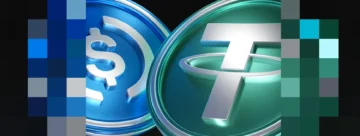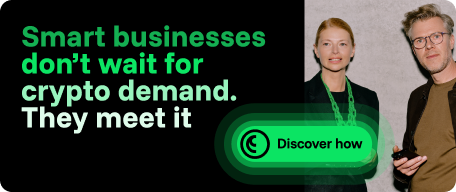Ethereum Blockchain: Who Handles Its Development?

In the sphere of cryptocurrencies, the Ethereum blockchain network holds a special place. ETH is the largest altcoin, with a market cap reaching $490 billion in 2024. However, Ethereum isn’t just a cryptocurrency; it’s also a virtual machine (EVM) and a global programming environment for decentralized applications (dApps). According to a Galaxy report, over 5,000 dApps were deployed on the Ethereum network in 2023. Furthermore, more than 22,000 active developers participate monthly in the development and support of its ecosystem.
The long-term sustainability and consistent growth of the Ethereum ecosystem result from an effective decision-making system within the project. The primary feature of Ethereum’s management system is balancing decentralized governance with the ability to implement necessary changes.
Who’s behind the management of this blockchain network, and how are decisions made regarding the development of the Ethereum ecosystem? Let’s delve into this.

How Are Decisions Made?
To implement changes at the base level of the Ethereum blockchain, there’s a process for reviewing improvement proposals known as Ethereum Improvement Proposals (EIP).
The EIP process is a key element of Ethereum’s governance, ensuring openness, community participation, and transparency in decision-making. The main stages are:
- Drafting. Any member of the Ethereum community can draft an EIP describing a specific improvement proposal. The main requirement is that the proposal must be clearly formulated and contain all necessary details, including motivation, specifications, and potential impacts.
- Discussion. The EIP draft is published on GitHub and discussed by developers and interested participants. This allows for identifying potential issues, improving the proposal, and gathering feedback.
- Last Call. After the initial discussion, the EIP author makes necessary corrections and adjustments. The proposal is then thoroughly reviewed and assessed for compliance with technical standards and the platform’s goals.
- Acceptance. If the EIP receives positive feedback and approval from the core developers, it moves to the voting stage, after which it gets one of three statuses — approved, rejected, or sent for revision.
- Implementation. After approval, the EIP becomes final and ready for implementation.
- Monitoring and Evaluation. After implementation, the EIP’s objective impact on the network is assessed. Additional adjustments are made if necessary to ensure greater network stability and efficiency.
During the Last Call stage, EIPs are reviewed by special editors who evaluate the proposal’s compliance with the technical standards of the Ethereum blockchain. These editors are essentially the first to make decisions regarding the implementation of changes. Some EIP editors are honorary, having participated in forming the blockchain ecosystem since its launch in 2015. Among these editors are:
However, honorary editors rarely participate in the initial EIP review process and more often get involved during implementation and monitoring stages. The formalization of EIPs is handled by the core team of editors, which periodically changes. As of May 2024, the team includes:
Statistics show that since the launch of the Ethereum mainnet blockchain, 61 EIPs have been implemented through hard forks, accounting for about 23% of the total number of EIPs. Over eight years, 143 EIPs were rejected, and 57 EIPs are still under discussion or review.

Where Are Decisions Made?
Decisions regarding the implementation of EIPs are made through open discussions and votes within the Ethereum dev community, conducted across various forums. These platforms essentially serve as the consensus-building venues among developers, who drive the ecosystem’s development.
Let’s consider each of the platforms separately.
All Core Developers (ACD)
One of the most crucial decision-making venues for Ethereum development is the All Core Developers (ACD) calls, which started a few months after the project’s mainnet launch.
ACD calls are public Zoom meetings, lasting about an hour and a half. Any member of the Ethereum community can join these calls, but they’re most frequently attended by EIP authors and the Ethereum Foundation development teams. ACD calls are often broadcast live and recorded.
From 2016 to 2022, ACD calls were held every two weeks, moderated by Hudson Jameson. Since 2022, following Ethereum’s transition to PoS, ACD calls have been held weekly and divided into two separate series:
- All Core Developers Execution (ACDE), focusing on changes to the Ethereum execution layer protocol, conducted by Tim Beiko.
- All Core Developers Consensus (ACDC), focusing on changes to the Ethereum consensus layer protocol, conducted by Danny Ryan.
In total, over 250 ACD calls have been held since 2015, with most of them available for viewing on the Ethereum Foundation’s YouTube channel.
ETHMagicians and Ethresear.ch
The forums ETHMagicians and Ethresear.ch are key elements of the Ethereum ecosystem, as discussions on these platforms often set the agenda for ACD calls. Both communities play significant roles in the development and evolution of the Ethereum protocol, maintaining openness and decentralization in the decision-making process.
ETHMagicians is an open community of Ethereum developers and enthusiasts created to discuss and coordinate technical improvements and innovations in the Ethereum ecosystem. The community acts as a forum for idea exchange, EIP discussions, and network development problem-solving.
Ethresear.ch is a platform for discussing and publishing research related to the Ethereum protocol and other blockchains. This site serves as a hub for idea exchange and research findings among devs, analysts, and blockchain enthusiasts.
ETHMagicians focuses on the practical aspects of EIPs, while Ethresear.ch provides a platform for more academic discussions. ETHMagicians was founded by Jamie Pitts, ex-Core Developer of the Ethereum Foundation, and Matt Garnett, Developer and EIP Editor Team Member. Ethresear.ch, on the other hand, was organized by well-known Ethereum enthusiasts such as Hsiao-Wei Wang, Justin Drake, Danny Ryan, and Vitalik Buterin.
According to statistics, ETHMagicians has published nearly 46,000 posts covering more than 2,500 discussion topics. In turn, Ethresear.ch users have discussed about 2,400 topics, creating over 46,700 different posts.
Discord
From 2015 to 2018, the Gitter service was used for daily coordination of active EIPs. However, with the community’s growth, a decision was made to transition to the Discord platform. By July 2023, there were more than 50 separate chats on various niche research and development topics related to the Ethereum ecosystem.
The primary channel on Discord for EIP discussions is Ethereum Research and Development.
GitHub
Another significant venue for Ethereum community communication is GitHub, the leading platform for open-source project development. GitHub serves as the center for drafting and documenting the Ethereum codebase.
The Ethereum page on GitHub hosts hundreds of code repositories, including:
- draft protocol versions;
- specifications;
- node API documentation;
- solidity smart contract language;
- testing tools and more.
However, Ethereum developers have discussed the need to reduce the ecosystem’s dependence on GitHub due to its centralization, citing instances where GitHub restricted access to code under government pressure. As alternatives for decentralized development, they propose using protocols like Radicle or Mango.

Who Makes the Decisions?
Now that we’ve explored how and where decisions about the development of the Ethereum ecosystem are made, it’s essential to understand who is behind the growth of the blockchain network.
Ethereum Foundation
The Ethereum Foundation (EF), a non-profit organization, plays a crucial role in developing the Ethereum protocol. Its mission is to support a broad range of projects aimed at enhancing and expanding the blockchain network’s capabilities.
The Ethereum Foundation was established in 2014 by the co-founders of the Ethereum blockchain, including:
- Vitalik Buterin, Co-Founder of Ethereum;
- Gavin Wood, Author of the Solidity programming language;
- Anthony Di Iorio, one of the first Ethereum Investors, who later founded Jaxx and Decentral;
- Mihai Alisie, one of the first Members of the Ethereum Development Team;
- Charles Hoskinson, Founder of the Cardano blockchain.
According to the foundation’s website, the current official members of the Ethereum Foundation’s executive board are Aya Miyaguchi, Executive Director, Patrick Storchenegger, Board Member, and Vitalik Buterin.
The EF’s headquarters are located in Zug, Switzerland. The main aspects of the Ethereum Foundation are:
- Supporting developers. The EF funds and supports teams working on the core Ethereum protocol. It also provides grants and scholarships to various projects and individual developers.
- Research. The EF is actively involved in research initiatives aimed at improving the scalability, security, and resilience of the Ethereum network.
- Partnerships and events. The EF collaborates with various organizations and projects to promote and integrate Ethereum across different sectors. It also organizes and supports major events like Devcon, an annual conference for Ethereum developers and enthusiasts, and numerous local meetups and hackathons.
- Educational programs. The EF organizes and supports educational programs, workshops, and courses for developers, analysts, and entrepreneurs interested in using and developing the Ethereum blockchain and DLT systems.
- Community support. The EF actively supports the global Ethereum community, facilitating the exchange of knowledge and experience among participants. It also provides access to extensive documentation and resources to help developers and users understand and effectively use the Ethereum protocol.
According to the latest financial report published by the Ethereum Foundation in 2022, the foundation allocated over $48 million to various projects and initiatives within the Ethereum ecosystem in 2021.
Client Development Teams
The teams responsible for developing, maintaining, and updating the client software necessary for running Ethereum network nodes are divided into two groups: Execution Layer (EL) developers and Consensus Layer (CL) developers.
There are a total of ten Ethereum client development teams, each comprising skilled blockchain developers, IT specialists, and programmers.
Key Execution Layer (EL) Development Teams
| Client | Year created | Programming language | License | Support team | Funding |
| Geth (Go Ethereum) | 2014 | Go (Golang) | LGPL-3.0 | 10 developers | fully funded by the Ethereum Foundation |
| Nethermind | 2017 | C# based on the open-source .NET Core framework | LGPL-3.0 | 300 developers from 66 countries | received a grant from the Ethereum Foundation and additional funding from various Ethereum community members and independent sponsors |
| Erigon (ex-TurboGeth) | 2017 | Go (Golang) | LGPL-3.0 | 10 developers | Ethereum Foundation, BNB Chain |
| Besu (ex-Pantheon) | 2018 | Java | Apache 2.0 | Pegasys (more than 70 developers) | Consensys |
| Reth (Rust Ethereum) | 2018 | Rust | Apache 2.0 | 8 core developers and over 90 independent contributors | Paradigm |
Consensus Layer (CL) Development Teams
| Client | Year created | Programming language | License | Support team | Funding |
| Prysm | 2018 | Golang | LGPL-3.0 | Prysmatic Labs (around 12 developers) | Ethereum Foundation, Gitcoin, Aragon, Spankchain |
| Lighthouse | 2018 | Rust | Apache 2.0 | Sigma Prime (around 25 developers) | Ethereum Foundation, Consensys, Gitcoin |
| Teku (ex-Artemis) | 2020 | Java | Apache 2.0 | Pegasys (more than 70 developers) | Consensys |
| Nimbus | 2018 | Nim | Apache 2.0 | 10 developers | Status, Ethereum Foundation |
| Lodestar | 2018 | TypeScript | LGPL-3.0 | ChainSafe (more than 100 developers) | Ethereum Foundation, Gitcoin, and Vitalik Buterin |
Understanding who makes decisions in the Ethereum ecosystem and how these decisions are implemented is essential for grasping the governance and development of the largest altcoin blockchain network.
- Tim Beiko;
- Danny Ryan;
- Justin Drake;
- Péter Szilágyi;
- Marcus Leva;
- Alex Stokes;
- Hudson Jameson;
- Mikhail Kalinin, etc.
Validator Node Operators
After the Ethereum network transitioned to a Proof-of-Stake (PoS) consensus algorithm, validators began playing a crucial role in maintaining and securing the protocol. To become a validator, one must stake 32 ETH. Some services allow becoming a validator for a smaller amount, but in such cases, the service manages the validator node and distributes rewards among participants.
According to beaconchai.in, there are approximately 1.5 million validator nodes in the Ethereum network, with over 70% being active.
Validators play a direct role in decision-making regarding code changes proposed by client development teams. Theoretically, validators have the highest authority in the Ethereum governance hierarchy, as updates proposed by developers only take effect if validators update their software to a specific block. Otherwise, updates are not fully implemented, leading to network splits. In practice, the coordination between developers and validators is smooth, primarily due to increased penalties for validators who fail to update their software after a hard fork.
Validators can influence decisions regarding EIPs. A notable recent example of validator influence is the Shanghai upgrade, which was expedited due to ETH stakers insisting on its necessity.
dApp Developers
Decentralized application (dApp) developers also play a critical role in the Ethereum ecosystem as the primary users of the network. Most end users do not interact directly with the Ethereum blockchain but access the ecosystem through dApp user interfaces. Therefore, the needs of dApp developers often determine the priorities for Ethereum’s development and influence code changes.
A significant example of dApp developers’ influence is the Dencun upgrade. Thanks to teams from Uniswap Labs and Optimism Labs, EIP-1153 was included in the hard fork, reducing transaction costs in Layer 2 protocols. This EIP was created in 2018 but was implemented only after Mark Tyneway, Co-Founder of OP Labs, highlighted during an ACD call that this EIP could save Uniswap users up to $3 million annually in gas fees.
The development of the Ethereum network is a collaborative effort involving many groups and individuals. Changes in the blockchain network undergo a lengthy process from discussion to implementation. The cohesive work of each part of the Ethereum governance system ensures network security and the introduction of necessary functional changes and innovations.











